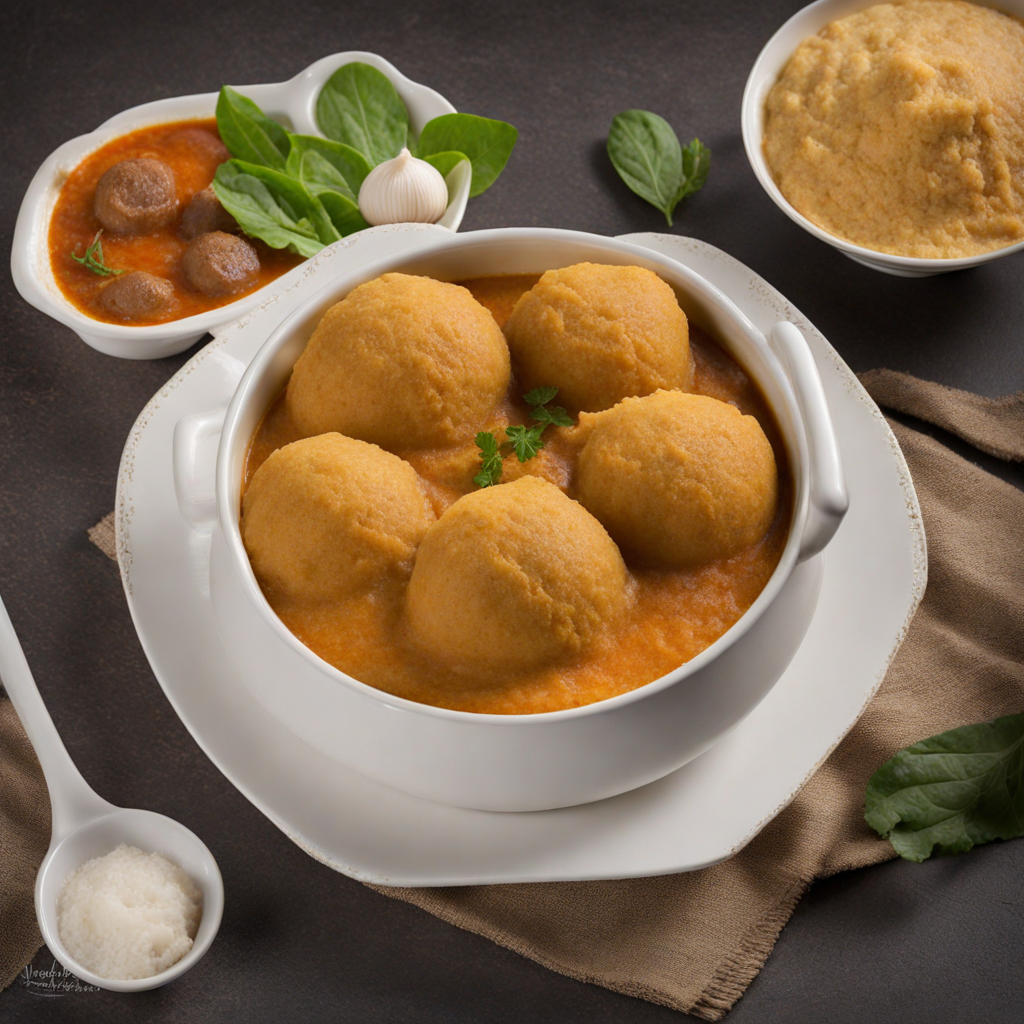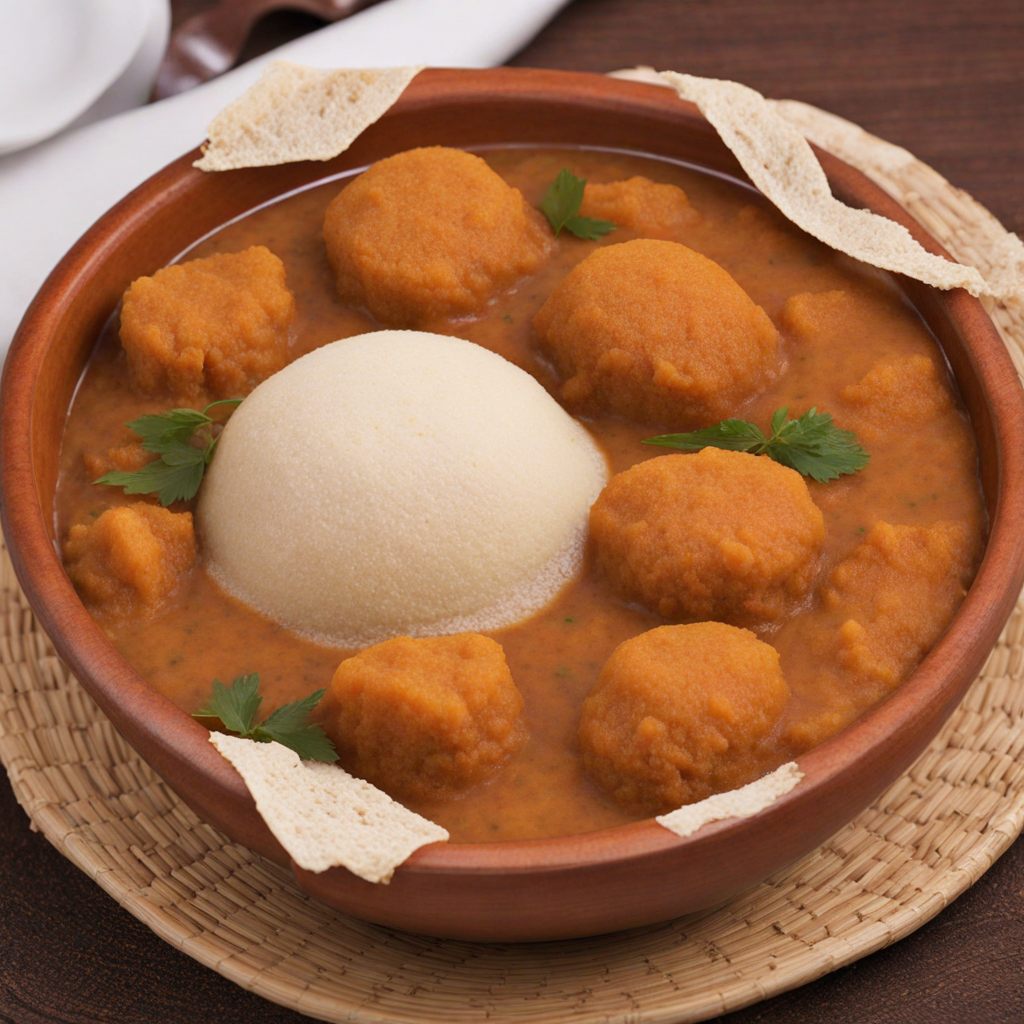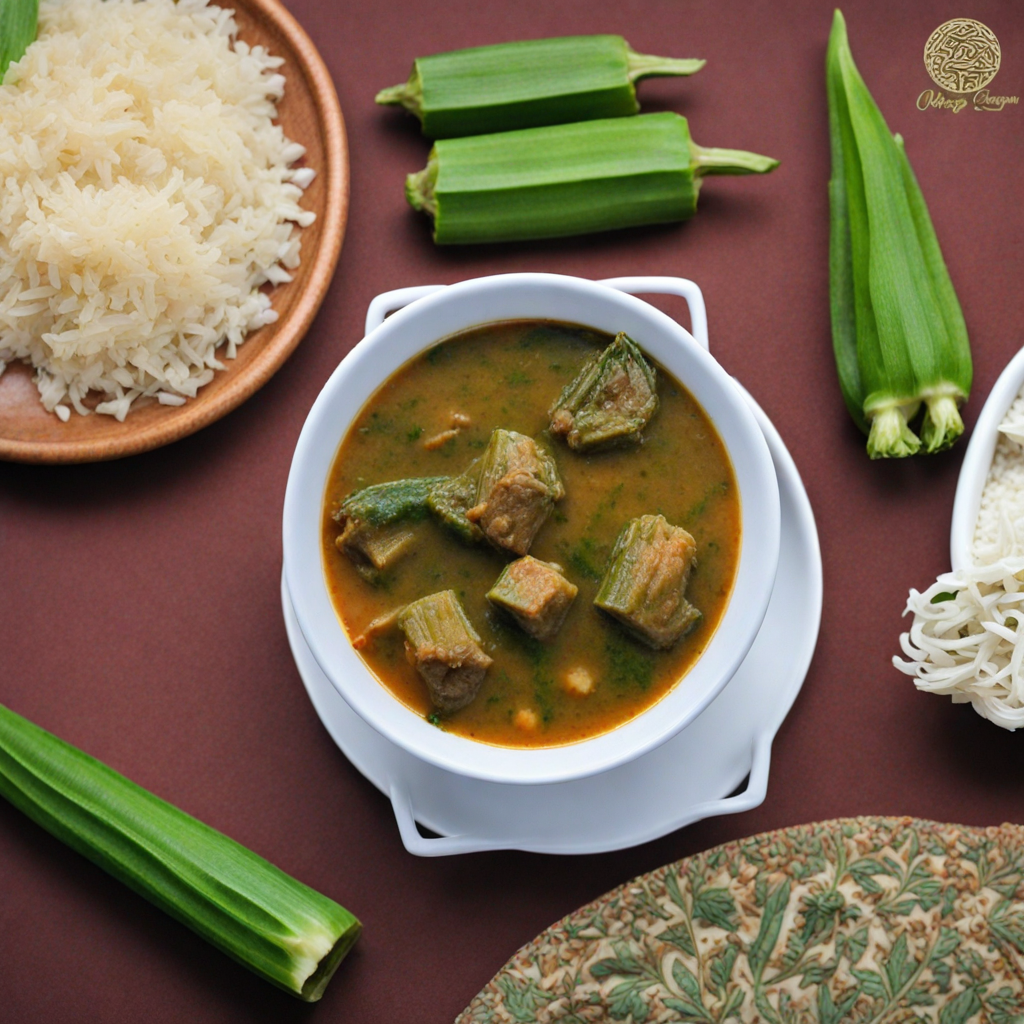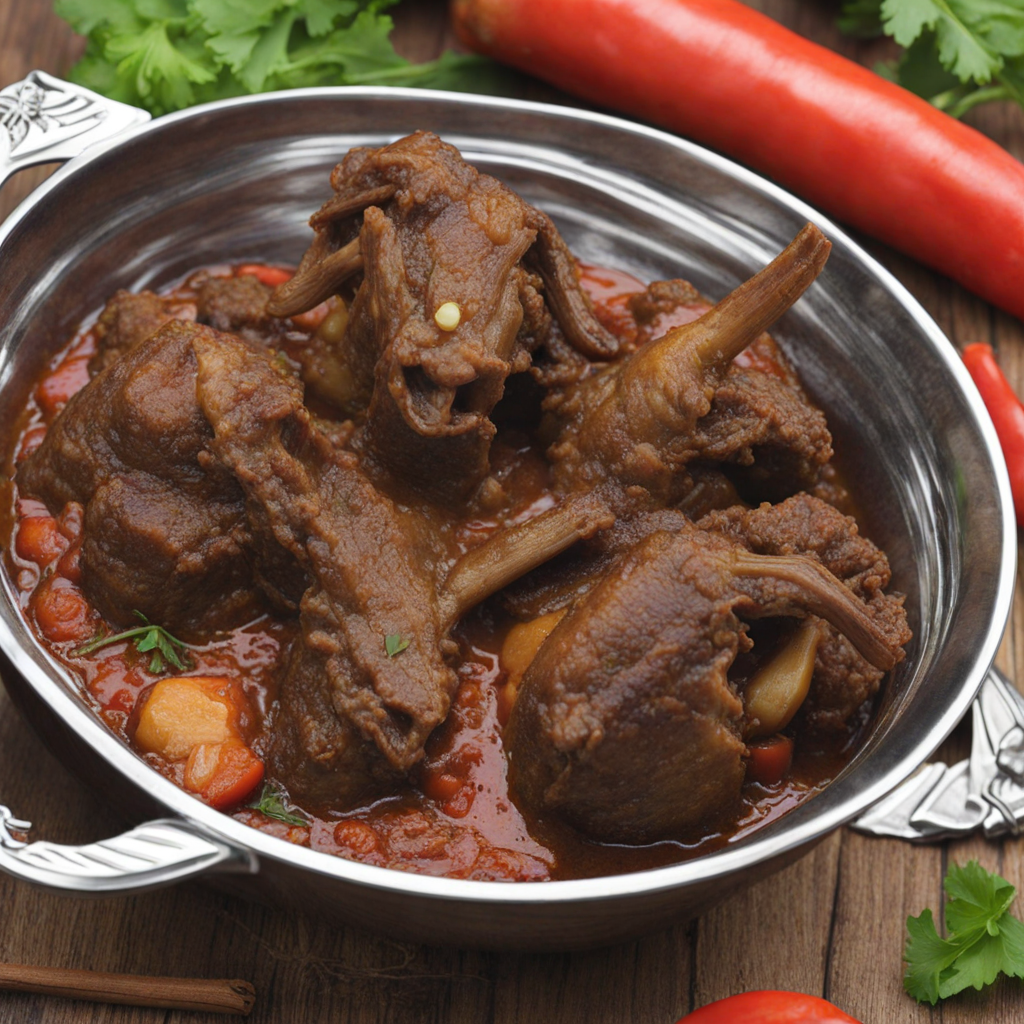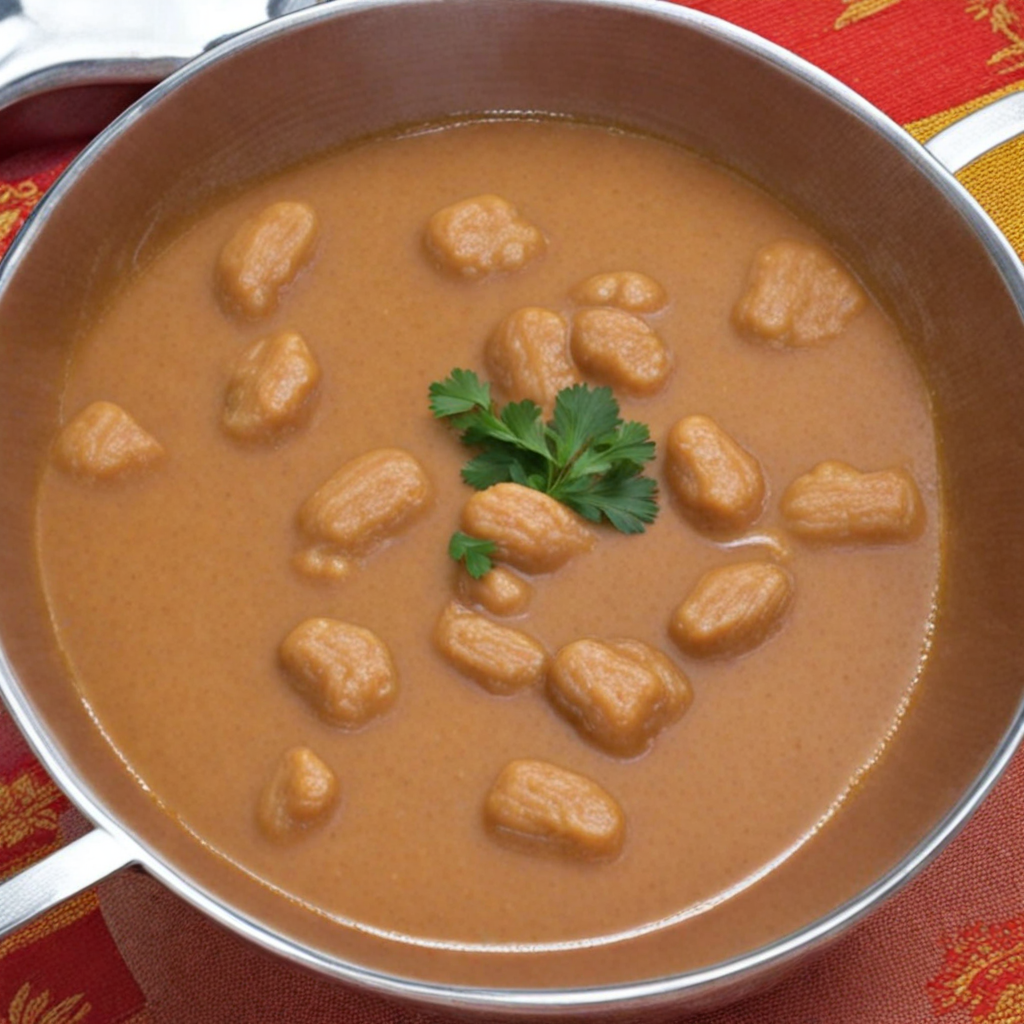Amala
Amala is a traditional Nigerian dish that offers a unique blend of flavors and textures, making it a must-try for adventurous food lovers. Made primarily from yam flour or cassava flour, it has a distinctive, slightly earthy taste that complements various soups and stews. The preparation involves mixing the flour with hot water while stirring until it achieves a smooth and stretchy consistency. This results in a dense, dough-like substance that is both filling and satisfying, making it a staple in many Nigerian households. Typically served alongside rich, flavorful soups such as Efo Riro (vegetable soup) or Ogbono (wild mango seed soup), Amala acts as the perfect vessel for soaking up the delicious sauces. The combination of the smooth, slightly chewy texture of Amala with the bold, spicy flavors of the soups creates a delightful culinary experience. The dish is often enjoyed with the hands, as diners tear off pieces of Amala to scoop up the accompanying soup, adding to its communal and interactive nature. Amala is also celebrated for its versatility, as it can be paired with a variety of proteins such as beef, goat, or fish. Each combination offers a different taste experience, allowing for endless exploration of flavors. Whether you're a seasoned foodie or a curious newcomer, trying Amala with its accompanying soups will transport you to the heart of Nigerian cuisine, showcasing the rich culinary heritage of the region.
How It Became This Dish
The History of Amala: A Culinary Jewel of Nigeria #### Origins Amala, a staple food in Nigeria, particularly among the Yoruba people, is a type of swallow made from fermented cassava flour, yam flour, or a combination of both. Its origins can be traced back to the diverse agricultural practices of the Yoruba and other ethnic groups in southwestern Nigeria. The term "amala" itself is derived from the Yoruba language, where it generally refers to the smooth, stretchy, and hearty dish enjoyed with various soups and stews. The preparation of amala begins with the cultivation of key ingredients: cassava and yams. Both of these tubers have been integral to the diets of many West African societies for centuries. Yam, often dubbed the "king of tubers," was cultivated as early as 1000 B.C. in West Africa, while cassava was introduced to the region from South America in the 16th century through the transatlantic trade routes. The adaptability of these crops to local environments made them staples, and their transformation into amala reflects the resourcefulness of Nigerian culinary traditions. #### Cultural Significance Amala holds a unique place in Nigerian culture, particularly among the Yoruba people, where it is more than just a food item; it is a symbol of identity, tradition, and community. The dish is often associated with celebrations, family gatherings, and communal feasts, where it is served alongside rich, flavorful soups such as efo riro (vegetable soup), gbegiri (bean soup), and ogbono (wild mango seed soup). Each of these soups has its own unique flavor profile and preparation style, enhancing the experience of eating amala. In Yoruba culture, the act of eating amala is often communal, reinforcing social bonds. Traditionally, it is eaten with the hands, creating a tactile and intimate dining experience that fosters connection among diners. This communal aspect is particularly evident at weddings, birthdays, and other significant celebrations, where amala is a prominent feature on the menu. Amala also embodies the philosophy of "food as identity." For many Yoruba people, it represents their heritage and cultural pride. As globalization and urbanization influence food practices, amala remains a steadfast symbol of Yoruba identity, serving as a reminder of roots and traditions. The dish is often paired with specific soups that have cultural significance, and sharing it strengthens familial and communal ties. #### Development Over Time The evolution of amala over time reflects broader changes in Nigerian society, agriculture, and culinary practices. Traditionally, amala was made from freshly processed yam or cassava. The ingredients were pounded or ground, mixed with water, and cooked until they reached a smooth, elastic consistency. This labor-intensive process was a community affair, often involving multiple family members or neighbors working together. With the advent of modern technology and industrialization, the production of amala has seen significant changes. Instant amala flour, made from dried and processed yam or cassava, has become widely available, making the preparation of the dish quicker and more convenient. While some purists argue that instant flour lacks the authenticity and depth of flavor of traditionally prepared amala, its accessibility has allowed more people, especially those living in urban areas or outside Nigeria, to enjoy the dish. Moreover, the globalization of food culture has led to a fusion of culinary practices. In urban centers, you can find variations of amala served alongside international cuisines, reflecting the diverse influences on Nigerian food. For instance, some restaurants serve amala with Italian sauces or as part of a fusion platter, showcasing its versatility as a dish. The growth of the Nigerian diaspora has also played a crucial role in the evolution of amala. As Nigerians migrate around the globe, they bring their culinary traditions with them, leading to the emergence of Nigerian restaurants and food trucks in cities worldwide. This has sparked interest in traditional foods like amala among non-Nigerians, who may be introduced to the dish through cultural festivals, food fairs, or social media platforms. #### Nutritional Value and Health Aspects Nutritionally, amala is a source of carbohydrates, making it an essential energy provider. When paired with nutritious soups, it offers a balanced meal rich in vitamins, minerals, and proteins. The use of locally sourced ingredients ensures that amala remains a sustainable food option, benefiting both the local economy and the environment. Though amala is celebrated for its taste and cultural significance, discussions around dietary health have prompted some to consider its carbohydrate content and its place in modern diets. In response, there has been a growing interest in whole-food alternatives and the incorporation of other grains and flours, such as millet or quinoa, into the preparation of this beloved dish. This evolution showcases the resilience and adaptability of Nigerian culinary practices in the face of changing dietary trends and health considerations. #### Conclusion Amala is more than just a dish; it is a culinary emblem of Nigerian culture that has withstood the test of time. Rooted in the agricultural practices of the Yoruba people, it has evolved from a labor-intensive traditional staple to a globally recognized food, adaptable to modern tastes while retaining its cultural significance. As Nigeria continues to navigate the complexities of globalization and identity, amala remains a comforting reminder of home, community, and heritage. The future of amala is bright, as it continues to inspire culinary innovation while honoring its rich history. As more people around the world discover the joy of amala, its legacy as a beloved dish will undoubtedly endure, enriching the culinary tapestry of Nigeria and beyond. Whether enjoyed at a bustling market, a family gathering, or a fine dining establishment, amala will always evoke a sense of belonging, celebration, and pride in Nigerian identity.
You may like
Discover local flavors from Nigeria


